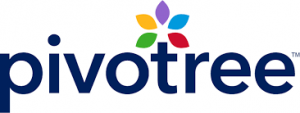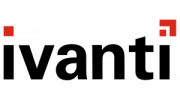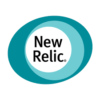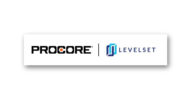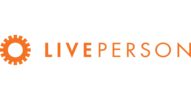Core Skills Central to Coaching
Life is a journey without a doubt, and we all walk our own path. For some, the road is relatively smooth; but for others, it’s not so clear-cut. This can manifest in different ways: a career that no longer fulfills, a relationship that’s grown stale, or a failure to achieve financial security. At various points in our lives, setbacks and growing pains can leave us paralyzed and unsure of our next move. In short, we feel stuck.
It’s this feeling of “stuckness” that can compel us to seek the help of a coach. Coaching can be used in numerous contexts, but the common denominator is a desire for change. For example, personal coaching can help restore life balance and a sense of purpose, while corporate coaching can arm executives with tools for effective strategic planning and help them set a new direction in the workplace. Finally, career coaching can be a helpful tool for professionals at any stage of their career, including the desire for something new and a desire to improve focus and performance in a current job.
What Is A Coach Exactly?
First and foremost, a coach is an equal. There is no hierarchy in the coach-client relationship; it is a partnership based on mutual respect and trust. Unlike therapy, which is rooted in the past, coaching is oriented to the present. A good coach sees each client as whole and resourceful, not broken and flawed. A gifted coach knows that it’s the client themself who holds the answers—as coaches, we are merely there to assist. We do this by empowering the client and setting the stage for self-learning and personal growth in a thought-provoking and innovative way. A skilled coach knows that we don’t get to where we want to be through dreams alone. Instead, we must motivate the client and facilitate change by creating a realistic and concrete plan of action and then— most importantly— hold them accountable. Accountability is key to a successful outcome.
Not everyone is meant to be a coach. Like most helping professions, it is a calling. But all great coaches share essential skills. These skills form the foundation of my own practice and are an essential component of earning potential clients’ trust. Masterful coaches share these five core skills:

Coaches Know How To Build Rapport
We’ve all met people with whom we instantly connect and others who make us distinctly uneasy. And while there are many contributing factors, it’s widely believed that people make unconscious decisions about others based on things like appearance, voice, tone, and behaviour— often within the first few minutes of meeting them. As coaches, we can assume that potential clients are making these same snap judgments about us. Happily, there’s a lot we can do to establish rapport—and therefore trust— with a future client:
- Eye contact. Good eye contact is critical because it conveys openness and curiosity, while poor eye contact can imply a lack of interest or untrustworthiness. However, some people aren’t comfortable holding eye contact for sustained periods. Stay mindful of this when meeting someone for the first time.
- Body language is another powerful means of communicating. Our stance, how we hold our arms, and how much we lean in to the person we’re speaking with conveys more about us than what we say with words. But while body language can help build intimacy, a coach must be mindful of a client’s boundaries: some of us require more physical space than others.
- A genuine smile and a firm handshake also help build rapport and make a strong first impression. A solid handshake sets a confident tone and makes the client feel they’re in good hands.
Coaches Are Gifted Listeners
Stellar listening skills form the basis of the coach-client relationship. The sad truth is that few of us have felt genuinely heard throughout our lives. When I meet a client for the first time and ask them about themself—their hopes, dreams, failures —it’s often the first time they have felt truly seen. This is because the average person listens on a superficial level, only hearing the actual words being spoken rather than what is being conveyed through tone and body language.
As human beings, we’re defensive by nature and prone to taking things personally in conversation. Through my work as a coach, I have honed my listening skills. Being conscious of how well I’m listening allows me to send signals to my client, encouraging them to continue sharing, to make decisions, and even to hear their own words.
Being highly attuned in this way requires me to engage in three levels of listening: internal listening—which is self-focused: how are these persons words affecting me?, focused listening, where the focus is entirely on the client, and global listening, where coach and client are trained only on one another: together, they are the centre of their own universe. Everything else fades from view.
Coaches Are Intuitive
Listening at the global level lets us tap into our intuition. Intuition is an invaluable coaching skill because it allows us to observe our client’s current state beyond just their words. By being intuitive, we can sense where a client is emotionally, whether they are regarding their goals, and whether they are living in alignment with their values. An intuitive coach can detect potential sources of dissatisfaction in their client and guide them in making changes.

Coaches Ask Questions
Asking powerful questions is key to a successful coach-client partnership. A carefully worded question can help someone see their situation in a new light. Simple questions are especially useful because they allow for a continuous conversation flow and can influence without appearing judgmental, preachy, or leading. Certain types of questions can empower the client and put them in the driver’s seat:
- Asking WHAT they are planning to do about a goal or obstacle
- Asking HOW they plan to do it
- Asking WHEN they plan to do it
The ’Why’ question, however, should be used judiciously, as it can imply judgment and lead to defensiveness in the client that can manifest as excuses and explanations. There’s also a vagueness to this question.
Coaches Know How To Give Feedback
Few of us enjoy feedback because it’s often rooted in what someone has done wrong versus how they can improve in the future. This leads to feelings of powerlessness for the person on the receiving end and discomfort for the person giving the feedback. Simply put, we can’t change our past mistakes, but we can make different choices moving forward. In coaching, we call this more positive approach, “Feedforward.”
Feedforward is a solution-oriented approach that allows people to stop dwelling on their failures and instead focus on a bright future. This technique is often used in the world of sports: basketball players are instructed to picture netting a basket, hockey players are taught to envision the perfect goal. Successful people are particularly receptive to feedforward because of its goal-orientedness: high achievers tend to reject judgment that they perceive to be negative and contrary to how they view themselves.

Essential Coaching Tools That Every Coach Should Learn
As mentioned, it’s the desire for change that motivates an individual to seek out a coach’s services. But change is scary, and it happens slowly. Before we can even think about changing an aspect of our life, we need to recognize and isolate the areas we want to be changed. A coach has many different tools at their disposal to help facilitate this process. These tools foster communication, build trust, and help the client recognize patterns, habits, and blocks, and ultimately envision future goals. The following tools are among the most universally popular and the ones that I use consistently in my practice:
The Wheel Of Trust
This coaching technique consists of a wheel divided into eight equal sections and creates a visual representation for the client. It’s especially helpful when someone is trying to pinpoint a source of unhappiness in their life or seek clarity around a job or personal relationship.
Although a Wheel of Trust can be applied to almost any area of a person’s life, “The Wheel of Life” is among the most common. In this exercise, the client is asked to identify eight areas of their life of most importance to them and then populate the wheel with these choices. With the help of their coach, the client assigns a number to each area. The number represents their current level of positivity about this area of their life.
The client then chooses an area to focus on and assigns a new number symbolizing where they’d like to get to in the future. By asking thought-provoking questions such as, “How do you think we’ll get from three to eight?,” the Wheel of Life can be a powerful means of facilitating client growth.
Case Study
33-year-old Meeka had been struggling in many areas of her life, including a chronic health condition whose unpredictability made it hard for her to hold down a job. Consequently, she had a history of securing jobs and then quitting them when her health problems cropped up. This left her feeling ashamed and ineffectual. It also left her struggling financially and having to turn to her parents.
As the youngest in a family of four, Meeka had often felt hapless and incapable growing up and her ongoing money issues only exacerbated this feeling. Meeka was also feeling dissatisfied in her relationship, partly due to the income discrepancy and partly due to a growing sense that her partner didn’t really know her.
We divided Meeka’s wheel into eight distinct areas: career, money, health, friends and family, significant other, personal growth, and fun/recreation. Together, we assigned a rating for each of these areas, and after some meaningful inquiry, Meeka settled on “career” as a starting point. She realized that next to her health condition— over which she had little control— financial stability was at the centre of her lack of self-esteem and the point of connection for all the other problems in her life. Meeka’s initial rating for career was a three, a figure she wanted to increase to an eight.
Through questions and gentle probing, Meeka realized that there were several things she could do to improve this area of her life, the main one being to seek a job that would allow her to work from home. This way, she could continue working whenever her illness flared up, without the stress of commuting and working in an office environment.
Meeka also identified flexibility in her workday as an important factor so she could go to medical appointments without having to ask for time off. In identifying these factors, Meeka recognized that working in an office was the cause of a lot of anxiety for her and left her feeling powerless when it came to achieving professional success.
Together, we came up with a list of achievable goals for Meeka to focus on—including updating her resume, enrolling in an online course to beef up her social media skills, and reaching out to people in similar fields to establish connections and learn more about the world of professional writing and communications. Within the span of four months, Meeka landed a job as a Content Creator for a small publishing house. She is now financially stable, which has improved her self esteem and eliminated her financial dependence on her parents. Meeka’s new-found confidence gave her the fortitude to focus on the remaining challenges in her life.

The GROW Model:
One of the most common coaching tools, The GROW model is arguably also the most powerful. To experience its effectiveness firsthand, coaches can apply the GROW model to themselves by isolating a personal goal that they would like to achieve and then following the four steps outlined in this model:
Goal: Coach and client decide on a particular goal to explore for that session and then write it down. This section can include such questions as whether anyone else should be told about the plan and if so, who? What the client’s long-term goals are, how much control the client has over the plan.
Reality: Client conducts a self-assessment, complete with illustrative examples. During this portion, the client recounts their story and then reflects on what is currently going on in their life, when it happens, and the client’s thoughts about why it continues to crop up and how it makes them feel.
Options: Coach asks probing questions that encourage the client to develop their own ideas that lead them to make solutions. This section invites brainstorming. At this point, it’s imperative that the coach merely guides rather than influences or makes suggestions for the client. This can be achieved by asking questions about how the client can move in the direction of the goal, what strategies have worked historically and what a first step might look like.
Will: Coach and client agree upon a specific goal, determine a time frame, and anticipate any problems that might come up, along with solutions. During this crucial stage, coach and client come up with a master plan of action, broken down into achievable steps. Helpful questions for this phase include how this goal aligns with the client’s current priorities, the client’s overall commitment to the plan, an estimated start and end time for each step and any foreseen obstacles that could slow progress.
Case Study
Kevin, mid-fifties, is a married father of two teenage girls who contacted me after deciding he wanted to transition from a career as an actor to a more stable profession in the field of Social Services. Using the GROW model, we formulated a plan to have Kevin working full-time in his desired field within three years.
Goal: Kevin set his goal to include education, internship, job hunt, and securing employment within a three-year period. He sought several people’s advice before settling on the field of social work— including his wife and a friend who also works in the field. Kevin felt confident in his ability to successfully execute his plan, though the prospect of returning to school in mid-life was daunting, and the thought of abandoning his life as an actor was painful.
Reality: Kevin told me his story of growing up as the youngest son of an extremely successful father and the unspoken pressure he felt to fill his dad’s shoes. Consequently, Kevin chose to become an actor rather than be held up against his accomplished parent.
While he achieved a degree of success, Kevin found the acting field competitive and unpredictable and often found himself struggling to make rent. Marriage and kids only compounded the problem and the financial strain wore on his marriage, role as a provider, and overall feelings of self-worth. Kevin identified strongly with being an artist but eventually came to realize that this attitude was ultimately irresponsible. He felt particularly ineffectual at family gatherings as he watched his younger nephews and nieces eclipse him professionally.
Options: Kevin and I brainstormed about how he might attend school while also continuing to support his family and still audition sporadically to keep his foot in the acting community. After considering the pros and cons of various configurations, Kevin decided that the only way for him to achieve his goal of launching a new career promptly was to quit his current job as a courier and apply for student loans. He also decided to stop auditioning altogether until he acquired his degree. As someone who has always worked best with an actionable plan, eliminating extraneous options left Kevin feeling invigorated and ready to focus on his end goal.
Will: Kevin isolated three colleges that offered the program he was interested in and attended an information session for each. He whittled his choices down to two and gained entry into both. He hoped to continue delivering part-time but realized this was untenable, so he put his job on hold during his study period. He applied for and received a mix of college loans and grants and accepted some financial help from his family. Kevin benefitted from the set start and end dates of his program, which compelled him to get organized in other areas of his life, so that come September, he could focus on his studies. He worked over-time during the summer to pad his bank account. He started his program energized, motivated, and empowered by the knowledge that he would be able to provide his family with a financially stable future.

Setting SMART Goals
Setting SMART goals is critical to successful coaching. SMART goals take a vague or obscure desire and give it an achievable outcome. SMART goals are comprised of the following steps:
Specific: The more specific a goal, the more likely we are to achieve it. Before we set a specific goal, however, we need to answer the five “W” questions: WHO is involved, WHAT is the desired goal you wish to accomplish, WHERE is the goal located, and WHICH constraints might you face. An example of a general goal might be to become more mindful. However, a more specific goal would be to download a meditation app and commit to a set amount of time per day to meditate.
Measurable: We all thrive with a deadline. To achieve a goal, we need to ask ourselves questions like “How much?” and “How many?” By measuring our progress, we’re less likely to get off-track and more apt to achieve our goals and feel the attendant sense of accomplishment.
Achievable/Attainable: Creating a timeframe goes a long way to achieving our goals. When we identify what we want, we can then find creative ways to make it a reality. When we’re inspired, we become resourceful and discover previously unidentified ways to make our dreams come true. This isn’t because our goals have become easier, but because we start to stretch ourselves in order to reach them.
Realistic: We need to have both the ability to work towards a goal and the willingness to achieve it. This doesn’t mean we can’t have lofty goals. In fact, it’s quite the opposite. High goals are often easier to achieve than low goals because a high goal requires extra exertion and sustained effort. A bonus side-effect of all that extra effort? Motivation!
Tangible: A tangible goal increases the likelihood that it will fall in line with the rest of the SMART goals. But intangible goals are also important when pursuing our objectives. These include the patterns of behavior and specific personality traits required to achieve long-term goals.
Life is messy and full of setbacks—none of us are given a guide book at birth. But when we believe in ourselves, we can move mountains. Sometimes, we just need a little guidance. By choosing to pursue a career as a professional coach, you’ll be embarking on a path to one of the most rewarding careers imaginable.
But along with time and commitment, your coaching career requires the ongoing support and input of a trusted mentor to guide you in your professional development. If you’d like to learn more about my services or are considering a career in coaching, contact me today for a free consultation.


